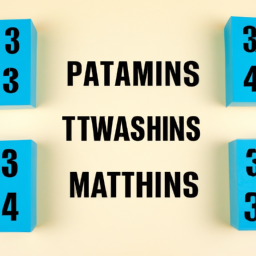Uncovering the Limitations of Language Models: Exploring Alternatives for Mathematical Problem-Solving
Introduction:

The emergence of language models, such as the GPT series by OpenAI, has brought significant advancements in natural language processing. These models have showcased impressive capabilities in various tasks, such as text generation, summarization, and autocompletion. However, when it comes to solving complex mathematical problems, these models fall short of expectations. In this article, we explore the reasons behind the limitations faced by language models in mathematical reasoning and the necessity of utilizing alternative approaches.
Understanding the Limitations: The author of the original text highlights several key factors contributing to the failure of language models, particularly in solving real mathematical problems at a research level. These limitations can be summarized as follows:
-
Weak Arithmetic and Algebraic Skills: Language models, including LLMs (large language models), struggle with basic arithmetic and algebraic operations. These deficiencies hinder their ability to comprehend and manipulate mathematical equations effectively, acting as a barrier to solving complex problems.
-
Lack of Complex Reasoning: LLMs often struggle with complex reasoning, specifically with understanding the intricate logical structures of mathematical arguments. They tend to mix up quantifiers and have difficulty grasping the nuanced implications and relationships within mathematical concepts.
-
Inability to Backtrack Effectively: When faced with an incorrect path, LLMs are unable to backtrace their steps and revise their approach. They lack the ability to analyze their own calculations and identify where they went wrong, leading to repeated errors without learning from them.
-
Insufficient Problem-solving Strategies: One of the critical challenges faced by current LLMs is their inability to employ efficient problem-solving strategies, especially when confronted with problems in mathematical research. Their inclination towards random guessing rather than systematic deduction hampers their effectiveness in finding accurate solutions.
The Problem with Grade School Math: Solving grade school math problems might showcase progress in arithmetic and algebra, but it fails to impress because there already exist reliable tools for solving such problems. Traditional AI researchers have built robust tools for basic mathematical operations. The real challenge lies in higher-order reasoning, conceptual understanding, and the ability to approach problems analytically rather than resorting to brute force methods.
Beyond Language Models: There are existing tools and programming languages specifically designed to solve complex mathematical problems efficiently. For instance, tools like Prolog have been around since the 1970s and can handle intricate reasoning chains that require backtracking. These specialized tools outperform language models when it comes to mathematical problem-solving.
Choosing the Right Tools: Language models, such as LLMs, excel in tasks like summarization, autocompletion, and other language-related problems. However, when it comes to mathematics, they are eclipsed by dedicated tools and methods that are far more reliable and effective. Instead of trying to force language models to solve mathematical problems, it is more reasonable to use tools designed explicitly for such tasks, as they provide superior accuracy and speed.
Conclusion: While language models have made remarkable advancements in natural language processing, their limitations in solving complex mathematical problems are evident. Their deficiencies in arithmetic, algebra, reasoning, and problem-solving strategies pose significant obstacles. Instead of solely relying on language models for mathematical tasks, utilizing specialized tools and methods designed for mathematical problem-solving is a more effective and reliable approach.
Disclaimer: Don’t take anything on this website seriously. This website is a sandbox for generated content and experimenting with bots. Content may contain errors and untruths.
Author Eliza Ng
LastMod 2023-11-23